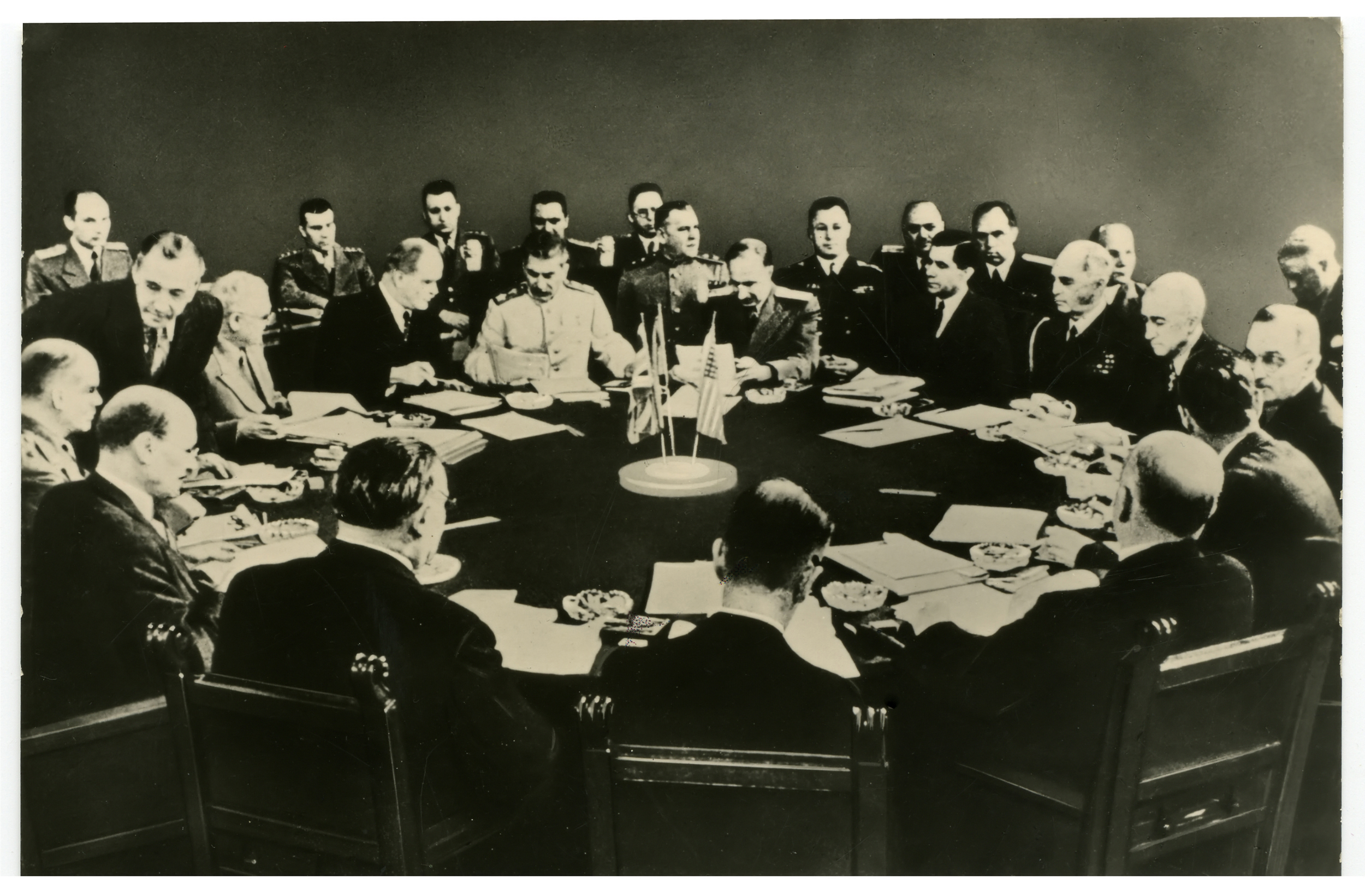The Allied powers were not of one mind throughout WW2. As a result, there were three major conferences held between the leaders of the United States, the Soviet Union and the United Kingdom to facilitate their coordination with one another.
The first was the Tehran Conference in November of 1943, the second was the Yalta Conference in February of 1945, and the third was the Potsdam Conference in July and August of 1945.
For context, the Potsdam Conference happened under very different circumstances from its predecessors.
First, two of the three Allied powers had either undergone or were about to undergo a change in leadership. President Franklin D. Roosevelt had died on April 12 of 1945, so the United States was now headed up by his successor President Harry S. Truman. Meanwhile, Prime Minister Winston Churchill still headed up the United Kingdom but was replaced part-way through by the new Prime Minister Clement Attlee, who had won the 1945 United Kingdom general election.
Second, the Potsdam Conference happened after May 8, which was the Allied acceptance of Nazi Germany’s unconditional surrender. As such, one of its primary aims was to determine how the Allied powers would administer the country.
The French had been granted a say in said affairs because of an agreement made during the Yalta Conference. However, the French leader Charles de Gaulle was not invited to the Potsdam Conference because of American insistence. His rejection became a source of much resentment in the times to come.
Besides this, the Potsdam Conference was also concerned with the Soviet occupation of Central and Eastern Europe, which was incompatible with Stalin’s promises at the end of the Yalta Conference.
Unsurprisingly, the Potsdam Conference did a great deal to shape the postwar order dominated by the United States and the Soviet Union. After all, it settled the handling of Germany, Italy, Poland and other countries.
Furthermore, the Potsdam Conference declared the terms of surrender for Japan, though the Soviet Union wasn’t involved in making the declaration because it was still neutral at that point.
The Japanese leadership did not respond. Their silence was interpreted as ignoring the declaration. The result? The opportunity for the United States to use their new, unspecified weapon—the first two nuclear bombs.

